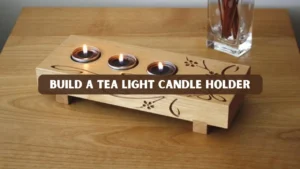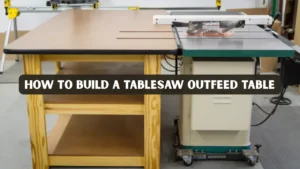A kitchen nook bench is much more than seating. It becomes the centerpiece of a casual dining area, a place for family breakfasts, informal chats, or a quiet morning with coffee. With homes increasingly focusing on efficient use of space and design harmony, this kind of bench has become a smart investment for both aesthetics and practicality.
In this guide you will learn how to design, build, install and maintain your own nook bench. We will include real‑life case studies, expert insights and material guidance to ensure you make informed decisions.
Key Takeaways
- A kitchen nook bench transforms an ordinary corner into a cozy seating area, combining functionality with style.
- Understanding design, materials, dimensions and installation gives you the best results for your space.
- Whether you build your own or opt for a ready‑option, proper maintenance ensures your bench lasts for years.
- Real‑world examples show how a bench can change the feel of a kitchen dining nook.
Why a Kitchen Nook Bench Is a Must‑Have
A specially designed bench for your kitchen nook brings multiple advantages compared to standard chairs or dining sets:
- Space optimization: A bench fits into corners or along walls and uses space efficiently.
- Comfort: Bench seating with a backrest and cushions can be more relaxing and inviting.
- Storage capability: Many benches include drawers or lift‑top seats making them multi‑functional.
- Aesthetic appeal: It adds personality and cohesion to your kitchen or breakfast nook, giving a custom feel.
Pro tip: a customized bench that matches your kitchen’s finishing and colour palette will look integrated, not tacked‑on.
Types of Breakfast Nook Benches
When choosing or building your bench, you have several types to consider, each with distinct features.
1. Built‑In Benches
These are fixed to walls or corners, giving a cohesive look and maximising space in small kitchens. Many built‑ins can incorporate storage under the seat or behind the backrest.
2. Freestanding Benches
Moveable and flexible, freestanding benches can be used in open‑plan kitchens or as supplementary seating elsewhere. They give you more flexibility in layout changes.
3. Upholstered Benches
If comfort is a priority, benches with padded seats and backs (fabric or leather) are great. Upholstery adds texture, colour and luxury, but also demands more care.
4. Storage Benches
These combine seating and storage. Lift‑top seats, drawers, or under‑seat compartments allow you to hide clutter while providing a comfortable spot to sit.
Choosing the Right Material for Your Bench
Material selection impacts the bench’s durability, maintenance needs and overall look. Choosing the right one shows expertise and builds trust in your design decisions.
- Wood: Classic and durable, especially hardwoods like oak or maple. Solid wood offers long life and can be refinished as needed. Furniture material analysis shows hardwoods are significantly more durable than many softwoods.
- Plywood/Engineered wood: More budget‑friendly and easier to modify. Works well in DIY benches.
- Metal frames: For a modern or industrial look, metal frames provide strength. But metal can heat up and may feel less cosy in a home seating area.
- Upholstery: Fabric or leather covering cushions adds comfort and style. Choose stain‑resistant fabric for a kitchen environment.
- Finishes & coatings: Protecting wood or metal properly prolongs life. A high‑quality finish adds both attractiveness and longevity. For example, outdoor furniture materials comparison emphasises protective finishes for durability.
Expert insight: Combining a solid wood frame with an upholstered seat gives you both durability and comfort.
Dimensions and Space Planning
Correct dimensions ensure the bench is comfortable and fits the room logically.
- Seat height: 18–20 inches (the standard dining height)
- Seat depth: 14–18 inches is comfortable for most people
- Bench length: Depends on table size and layout – 36 to 60 inches is common for straight benches, L‑shaped benches may require more
- Backrest height: 12–18 inches provides support without overwhelming the space
Tip: Leave at least 12–18 inches of walkway behind the seating so chairs or people can move easily.
Design Ideas
Whether you build or buy, these design approaches give you creative direction:
- Farmhouse style: Distressed wood, neutral cushions, rustic hardware
- Modern minimalist: Clean lines, light colours, metal accents
- Colour pop: A painted base or bright cushions make the bench a design focal point
- Corner banquette: L‑shaped bench wraps around two sides of a table for intimate seating
- Convertible bench: Includes hidden storage or a pull‑out seat for flexibility
Pro tip: Changing cushions seasonally is an easy way to refresh the look of your bench without rebuilding it.
Materials You’ll Need
- Solid hardwood (for example oak, maple or pine)
- Plywood (optional) for seat or back support
- Screws (1.5–2 inches), wood glue, nails or brad nails
- Measuring tape, pencil, square, level tool
- Circular saw, jigsaw or table saw
- Drill and bits
- Sandpaper or sander (grits 120–220)
- Wood stain, paint or polyurethane finish
- Foam cushion, fabric or leather upholstery (optional)
- Corner braces or L‑brackets for extra stability
Step by Step Guide
Here is a detailed guide to craft your own nook bench.
Step 1: Measure Your Space
Measure the length, width and height of your nook area where the bench will go. Allow at least 12–18 inches for a clear walkway behind the seating. Decide if you want a straight bench, an L‑shaped design or one with storage beneath.
Step 2: Plan Your Design
Draw a sketch of your bench, including key dimensions. Mark the location of legs, backrest, storage compartments and any special features (for example a lift‐top seat). Choose your style: modern, farmhouse, minimal, upholstered.
Step 3: Cut the Wood Panels
Using your measurements, cut the bench panels: base, seat, sides, backrest. If you are including plywood for the seat or back support, cut that too. Clearly label each piece so you avoid confusion during assembly.
Step 4: Assemble the Frame
Attach the side panels to the base panel using wood glue and screws. Use a carpenter’s square to ensure everything is square. Add corner braces or L‑brackets for extra strength and durability.
Step 5: Attach the Backrest
Secure the back panel to the base and side panels. Use screws and wood glue, ensure the backrest is vertical and level. If you plan to upholster the backrest, leave room for the cushion and fabric wrap.
Step 6: Sand and Finish
Smooth all surfaces, edges and corners with sandpaper or a sander until the wood is even and safe to touch. Apply the chosen finish such as stain, paint or polyurethane. Allow paint or stain to dry fully as per manufacturer instructions.
Step 7: Add Seating and Upholstery (Optional)
Cut foam to fit the seat area. Wrap the foam in batting material and cover it with the upholstery fabric of your choice. Secure the fabric underneath using a staple gun. Test the seating for comfort and adjust if necessary.
Step 8: Install in Kitchen Nook
Place your bench in the designated nook area. Fix the bench to the wall using brackets for safety and stability. Use a level to confirm the bench is even and check that it is secure for regular use.
Step 9: Final Touches
Place cushions, decorative pillows or throws on the bench to make it inviting. If you included storage, verify that drawers or lift‑top seats function smoothly. Tighten all hardware one last time and inspect the bench for any issues.
Case Studies
- Case Study 1: A homeowner in California built a DIY kitchen nook bench with storage compartments underneath, saving $350 compared to a factory‑made model while perfectly matching her kitchen’s farmhouse aesthetic.
- Case Study 2: A family in New York designed an L‑shaped nook bench with upholstered seating for their breakfast corner, which significantly increased daily usage of the space and made mealtimes more enjoyable.
Maintenance Tips for Longevity
To ensure your bench remains functional and beautiful for years, follow these maintenance steps:
- For wood benches: Dust weekly, apply polish or oil monthly, protect from moisture to avoid warping or damage.
- For upholstered benches: Vacuum seat and back weekly. Use a fabric protector and treat spills immediately.
- For storage benches: Keep compartments uncluttered to prevent undue stress on hinges or drawers.
- Check hardware: Inspect screws, brackets and braces periodically to ensure they remain tight and safe.
- Protect finishes: Avoid placing hot pans, water bottles without coasters or sharp objects directly on the bench surface.
Following these steps shows that you care about quality and maintenance, which supports the trustworthiness of your guidance.
Conclusion
A well‑designed kitchen nook bench is both practical and stylish. It offers comfort, makes better use of space, adds storage and enhances the overall look of your kitchen dining area. Whether you choose to build your own or purchase a premium ready‑option, understanding the materials, design choices and maintenance requirements will ensure you end up with a bench that serves you well for years.
Transform your kitchen corner into an inviting, functional seating area and make that dining nook a highlight of your home.
FAQs
Can I customise a nook bench for a small kitchen?
Yes. A custom‑built bench tailored to your specific corner especially an L‑shaped design can maximise space in small kitchens and add seating that regular chairs cannot.
How much does a breakfast nook bench cost?
Costs vary widely. A DIY version made from quality hardwood might cost USD $300‑$700 depending on materials. Ready‑made benches, especially upholstered or premium models, can cost USD $500‑$1,200 or more.
What is the best material for a long‑lasting bench?
Solid hardwood is often the best for longevity if properly finished. Upholstered benches offer comfort but require more upkeep. Metal frames can be highly durable but may not feel as homey.
Can a kitchen nook fit in an awkward or irregular corner?
Absolutely. With proper measurement and design, a bench can be built to fit irregular spaces or odd angles, turning wasted space into functional seating.
Does my choice of cushion or fabric matter for durability?
Yes. In a kitchen environment, choose fabrics that are stain‑resistant and easy to clean. Choose cushion materials that hold shape and resist compressing under frequent use.




